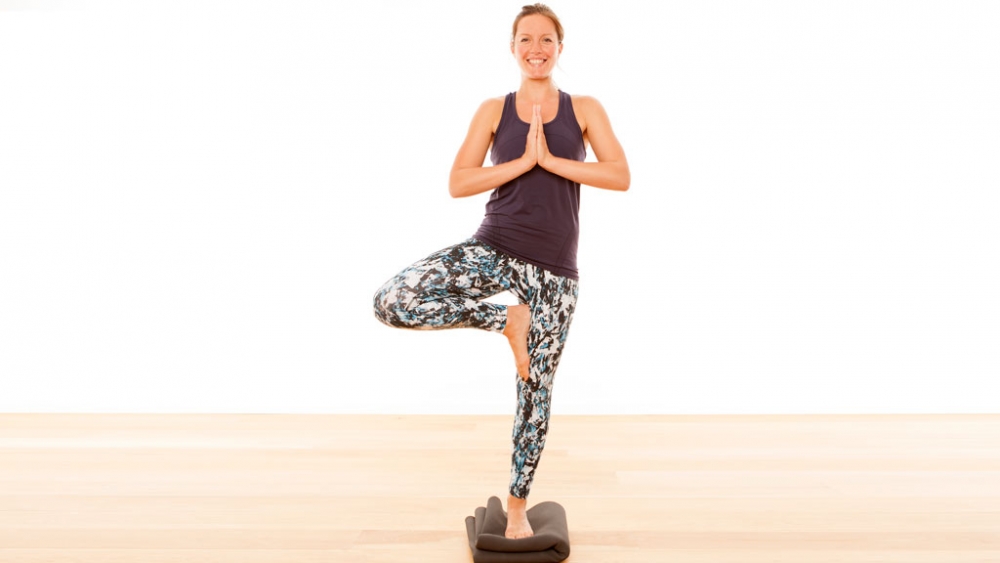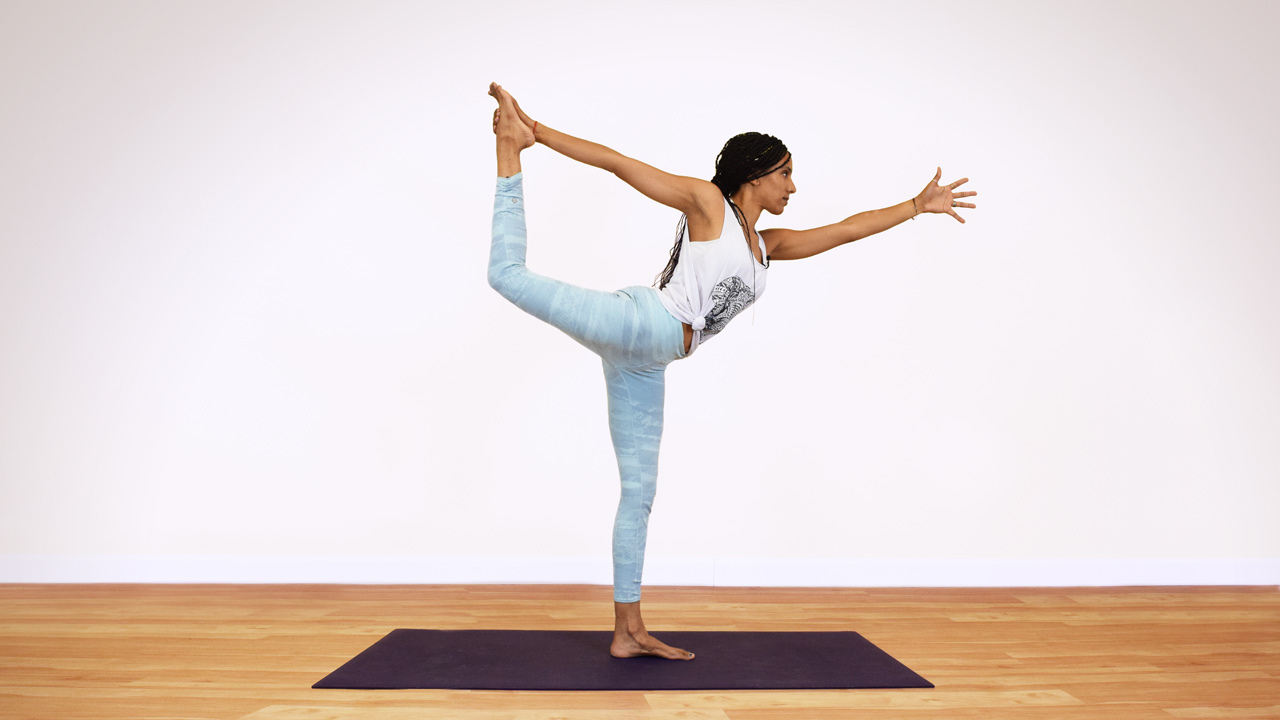Starting from the ground up…
1. Create a steady, not stiff, foundation
There are twenty-six bones in the feet with a complex network of muscles and connective tissues supporting them. In standing balance poses the little stabilizing muscles in your feet (and ankles) are constantly making micro-movements and adjustments to keep you upright. However, for many of us, these muscles and tissues can be tight and stiff. Before you start your practice spend some time massaging your toes, feet and ankles to loosen up, especially if you get cold feet or you’ve been in shoes all day.
Use a tennis ball to massage the soles of your feet while you’re sitting or standing still at work. Place the ball on the floor under your foot and press down on the ball, spending some extra time in tighter places. Tennis balls do have a habit of rolling away across the room when you forget about them so put them in a sock first to prevent office-based calamities!
To give the stabilizing muscles some extra training practice, try balances like Tree Pose on a folded yoga mat or a stack of towels. Build this up gradually as you may be working previously under-used muscles.
Suggested classes
- Sandra Carson’s Happy Feet practice 45 mins, all levels
- David Lurey’s Garden of Delight 45 mins, all levels
- José de Groot’s Open hands and feet 60 mins, all levels
You’ll see both José and David use the word ‘intense’ in their class descriptions – I can personally confirm that they are not kidding!
2. Activate your arches

The arches of the foot are fundamental in supporting and distributing the weight of the body. When the feet are firmly rooted into the ground and you engage the arches of your feet you create an upward lift of energy – pada bandha.
Practice engaging and strengthening your arches by lifting and spreading the toes and then placing them down one by one starting from the little toe side. I was once told to think of the way a frog lifts and places their feet. Also, think of lengthening the feet from heel to toe. Strengthening and stretching your feet in this way creates what Tias Little describes as “an effective trampoline that springs the weight of the body upward”
Read: Safe knees and feet in yoga practice for more about the arches of the foot.
Suggested classes
- Watch Adela Serrano’s class – Fundamentals of yoga – balance from your feet 30 mins, all levels – for different ways to stretch your feet, make them wider and longer and bring awareness to them so that you can firmly use your feet to support your poses.
- Discover the “magic button” and get more general balance tips in Clayton Horton’s Ashtanga standing balancing poses clinic 10 mins, all levels
3. Lower your centre of gravity
When we stand on both feet with hands by our sides our centre of gravity is somewhere just around or under our navel. As we change this by raising our arms the center of gravity becomes higher and we are less stable over our base of support (the feet in this case).
What can also often happen is that our attention is sent higher up too, especially for those of us prone to a lot of mental chatter in balance poses …“don’t fall over don’t fall over you’re on film it’s really embarrassing don’t fall over oh no I fell over” and so on! 🙂
When this starts to happen bring your focus and attention to that point below your navel where your center of gravity normally is. Try to keep your attention in that spot. This principle of one-point focus is used in martial arts like Aikido.
Bringing your mental focus down to your centre of gravity is also helpful for anxiety.
Suggested classes
- Watch Esther’s Test your balance class where she explains how to use the breath to direct your energy – grounding and lifting at the same time.
- Ground from your centre with another helpful class taught by Esther – includes some Core work, Standing poses, Hip openers and a Backbend.
Standing Strong Balance Challenge
Join Laia Bové for a fun and challenging level 2 Vinyasa yoga program where you’ll work on a variety of balancing poses.


